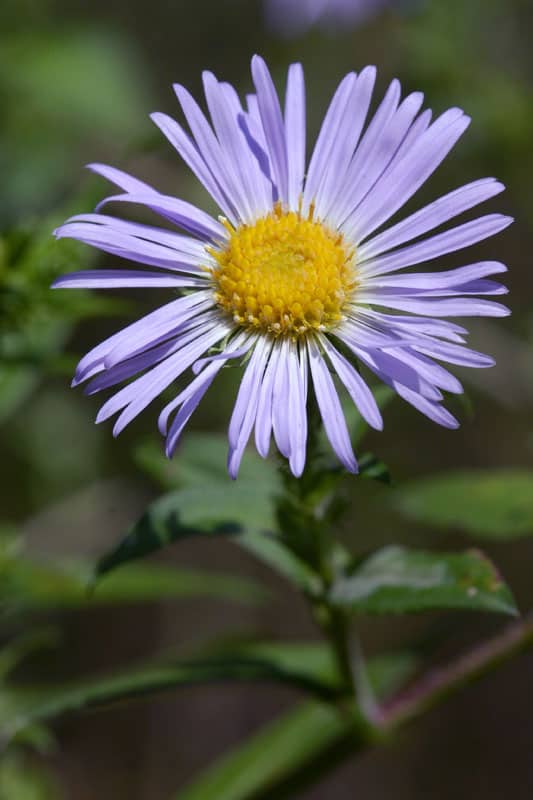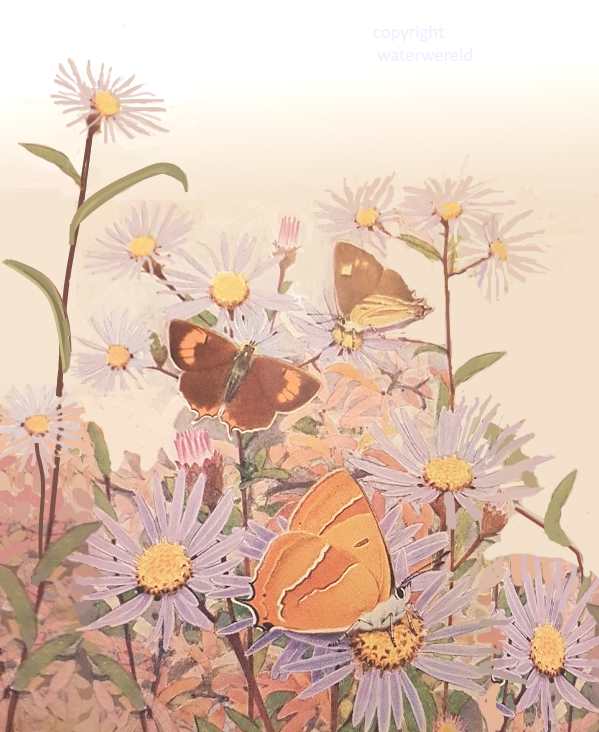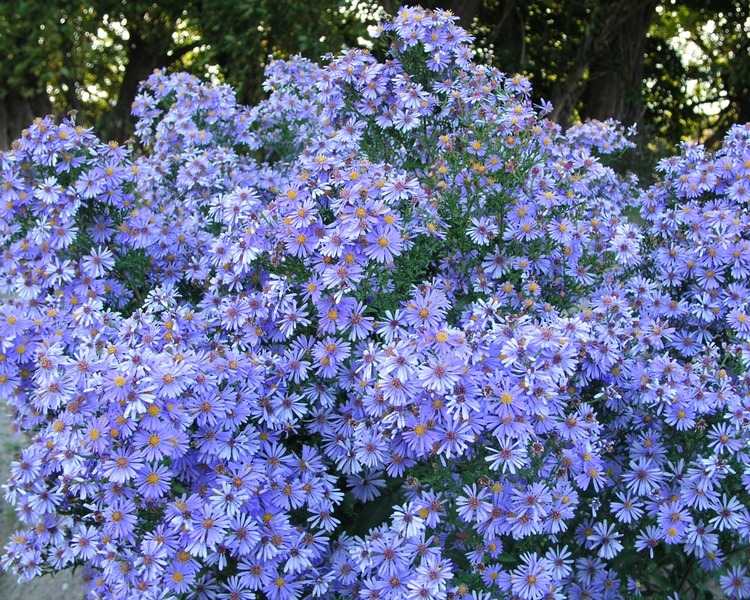Michaelmas daisy
Michaelmas daisy is an aster and a herbaceous perennial plant. Its origin is the USA and came to Europe gardens in 1710. From there it escaped and nowadays can be found in the wild. There are more then 70 cultivars raised from the New England aster , and even more by using the aster novi-belgii. The all have in common that they are very tolerant to soil and climats and even tolerate some shade.

Aster means star
The aster became its name from the flower shape , aster means star. The flowerhead has yellow disc florets at the center and ray florets , with colors depending on the cultivare , mostly purple or pink. Asters produce reliable long lasting blooms and also food for bees in the late season garden.

Aster and the bees, wasps an butterflies
During autumn, bees and wasps are always attracted by sedum and aster: They are the last wild plants that produces honey in fall. Even some butterflies feed on them . Sedum and aster are followed by European Ivy and poison Ivy (not related): they will produce honey even at the start of the winter.

Asters in a vase
Asters have an exceptionally long vase life. Remove all the leaves below the water line and thin out the leaves up the stem a bit more. To extend the vase life you have to put a drop of bleach in the water and remove the leaves that sink into the water.

Michaelmas daisy for the garden
These cultivars have an high ornamental use in the garden : ‘King George’ and ‘Veilchenkönigin’ (also known als Velvet Queen): they will flower until the end of fall, when a storm ends there life. Both have gained the Royal Horticultural Society‘s Award of Garden Merit. (1)

Propagation of Michaelmas daisy
Asters are propagated by division: Just dig out half of the plant leaving the remainder in the ground. The removed clump can be replanted. Asters can be replanted almost any time of the growing season until the start of the autumn. Asters will only need a very slight amount of fertilizer every year.
The aster family has the name changed
The huge aster family (Asteraceae) has been prone to name change for scientifical reasons: DNA research showed that most new world asters are not related to old world asters. By far the largest number of the species transferred from Aster to other genera, including the majority of those cultivated in Europe, are now in Symphyotrichum. This happened Aster novae-angliae or Michaelmas daisy, it is now called: Symphyotrichum novae-angliae (3).
reference
1 https://www.rhs.org.uk/plants/trials-awards/award-of-garden-merit
2 https://commons.wikimedia.org/w/index.php?curid=10285606
3 Recent name changes in the aster family (Asteraceae) http://www.guynesom.com/AsternamesWEB.htm
